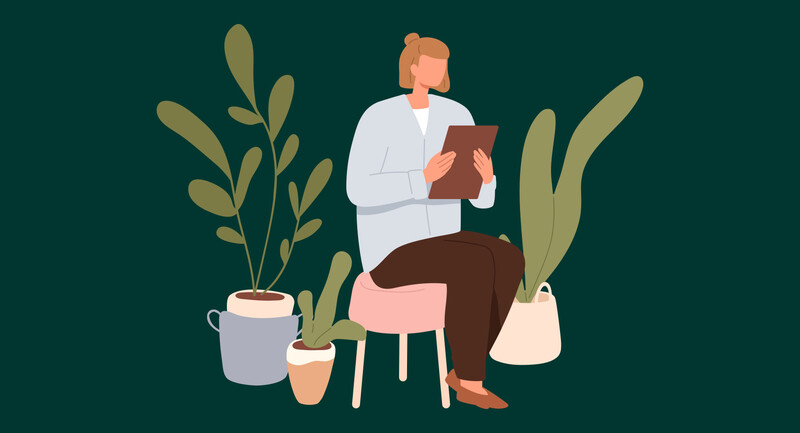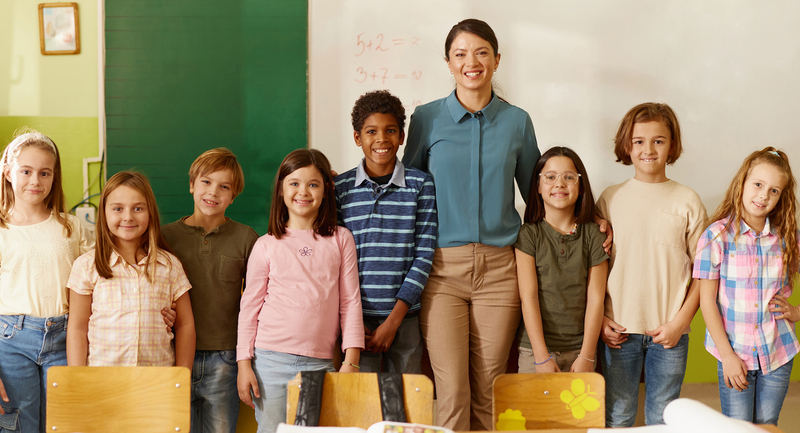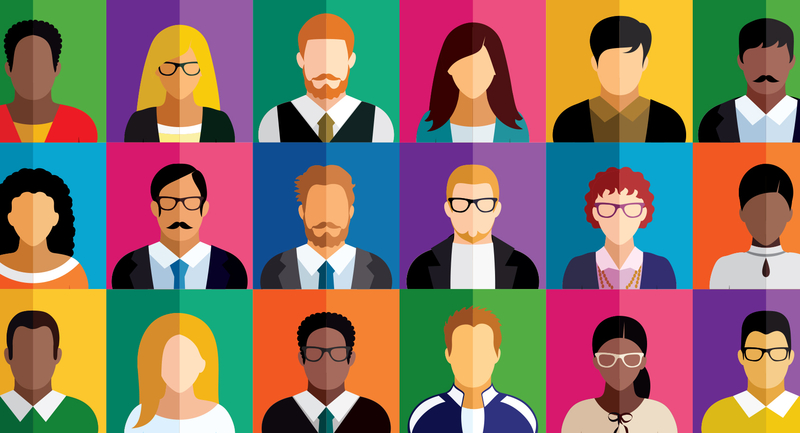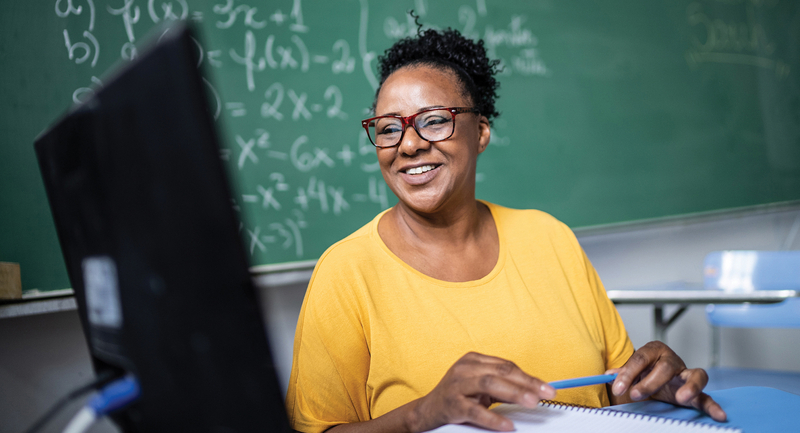Growing up, I was a student navigating an education system that didn’t fully see me. As a young immigrant in a new country, I wrestled with language, culture, and identity, sitting in classrooms where few, if any, shared my background or understood my experience. Teachers often made assumptions about who I was, what I could achieve, and even how I should behave. As a young Black girl, I learned the power of unspoken biases, microaggressions, and microinvalidations—and how they can quietly determine what opportunities we’re given. These experiences stayed with me, influencing my confidence and self-worth throughout my life and career. Even as an adult, I continued to encounter these biases in various spaces, from workplaces in education to my studies as a doctoral student.
When I became an educator in one of the country’s most diverse school districts, I saw that my story was part of a larger narrative. The biases I’d faced growing up continue to affect students today, as educators still sometimes unintentionally judge students based on their name, skin color, or cultural heritage. Yet I also recognized the incredible potential within our profession to challenge these biases and create classrooms every child deserves. The EQUAL Methodology™ I developed was born from this journey. The following tips and mindset shifts are designed to support teachers in building classrooms that truly honor every child.
Tip 1: Evaluate Self-Awareness
Early in my teaching career, I remember catching myself making snap judgments about students based on subtle cues like their last names or siblings I’d previously taught. If an older sibling had been challenging, I would unconsciously brace myself for similar behaviors from the younger one. These assumptions were subtle, almost invisible, yet they influenced my interactions and shaped the expectations I set for these students. Just because we chose this profession with the best intentions doesn’t mean we’re free of biases. And being a person of color doesn’t exempt me from holding unconscious assumptions. Recognizing these biases was humbling, but my acknowledgment of them became the first step toward meaningful change.
We all bring unconscious assumptions into the classroom, shaped by our experiences, backgrounds, and the stereotypes we’ve absorbed over time. If we don’t confront these biases, they silently shape the culture we’re building, often in ways that undermine the inclusivity we aim to create. Imagine the impact if we could truly see each student without those filters—recognizing them as individuals rather than through the lens of our assumptions.
For me, engaging in implicit bias and cultural sensitivity training was revealing. These sessions felt like looking into a mirror, reflecting back areas where I still had room to grow. They surfaced memories of comments I’d heard throughout my life, like, “You’re so articulate for a Black girl” or “I expected more with a last name like Singh.” These words left lasting impressions, helping me understand how seemingly small biases can have significant, long-term effects on students’ confidence and sense of belonging. Statements like “I don’t see color” were equally damaging; they minimized my identity and my lived experiences. Such reflections allowed me to recognize that my own biases, though unintended, could be undermining the inclusive environment I wanted to create.
Mindset Shift
Creating an inclusive classroom requires examining our biases and understanding how they shape our interactions with students. A simple starting tool is a personal SWOT (Strengths, Weaknesses, Opportunities, and Threats) Analysis, adapted for our teaching practices. Begin with a question like, Do I hold different expectations based on students’ names, gender, cultural backgrounds, or behaviors? Then, ask yourself, Where am I strong in fostering inclusivity? Where do I struggle? Reflecting on beliefs or practices can reveal biases we might not realize we hold.
The most powerful role models are those whose stories aren’t found in textbooks but who represent possibilities our students may never have considered.
Tip 2: Qualify Traditional Curriculum
I was born in Jamaica to an Indian family. We moved to the United States when I was 9 years old, and I quickly realized my history, culture, and experiences were almost entirely absent from what I was learning in school. It wasn’t until college, in an African American Literature course, that I encountered voices, stories, and authors who spoke to parts of my journey. This experience was transformative—it exposed just how much had been missing from my education and opened my eyes to the power of representation.
When we qualify traditional curriculum, we critically examine and adjust it to ensure it is inclusive, culturally responsive, and representative of all students’ identities and experiences. Implicit biases in traditional education often prioritize Eurocentric perspectives, subtly suggesting that only certain histories and cultures are “worthy” of study. This lack of representation can leave students from diverse backgrounds feeling unseen and excluded, impacting their sense of belonging and self-worth. Many educators unconsciously assume that a “standard” curriculum serves everyone equally, without realizing the harm caused by omitting certain voices.
When I became a teacher, I felt driven to change this for my students. I wanted them to see themselves in the curriculum and show them their stories mattered. This wasn’t part of my teacher preparation—I pursued it myself, delving into Gloria Ladson-Billings’ (1995) culturally responsive pedagogy. This model centers students’ identities and cultures, fostering pride and a sense of belonging. Integrating diverse voices, perspectives, and histories enriches learning for all students, making it more relevant, deeper, and more impactful.
I began incorporating diverse literature and projects that connected directly to my students’ lives. One year I gave my students an author study project, allowing them to choose writers who resonated with them. A student named Adriana discovered her grandfather’s Cuban poetry and proudly shared it with the class, transforming her academic performance and engagement. Another time, while discussing Sandra Cisneros’s novel The House on Mango Street, I saw students connecting deeply with themes like racial profiling and economic struggles, issues they saw in their own communities. Culturally responsive pedagogy allowed me to create a curriculum that honored their lived experiences.
Mindset Shift
When students don’t see themselves in what they’re learning, it chips away at their sense of belonging and limits their engagement. They start to believe their histories, cultures, and identities exist on the margins—or not at all. That’s why it is necessary to shift our mindset to view representation as a necessity, not an add-on. Creating a more culturally responsive curriculum doesn’t mean scrapping everything and starting over. It’s about being intentional and seeking balance. Ask yourself:
Does this lesson present a full, accurate story or just one perspective?
Whose voices, innovations, and contributions are missing?
How can I introduce diverse perspectives to deepen students’ understanding?
Making small but deliberate shifts—integrating diverse texts, music, art, historical accounts, scientific discoveries, and mathematical achievements—changes everything. When I started doing this, my students’ confidence and engagement soared. They felt seen. They felt valued. And most importantly, they felt like they belonged in the learning.
There is no one 'look' or 'type' for qualities like resilience, empathy, or creativity.
Tip 3: Uplift Nontraditional Skills
When we think of a class president, who comes to mind? Likely, it’s the outspoken, confident, “perfect” student. But what about the class clown, student athlete, overachiever, teacher’s pet, struggling learner, rule-breaker, creative, or social butterfly? When considering qualities like resilience or empathy, what kind of student do we envision?
Pause here and picture it—those labels likely conjure specific faces, personalities, and assumptions. These mental images reflect the implicit biases we carry about what these students “should” look like, sound like, or even behave like.
Take student leadership as an example. I often overlooked quieter students with strengths not typically associated with my “ideal” leader—outgoing, assertive, and vocal. I assumed students who lacked these traits couldn’t lead. But then I met Matthew, a reserved student with remarkable empathy, creativity, and organizational skills. He didn’t fit my traditional image of a leader, but when given the chance, he excelled. Matthew planned events, organized team projects, and brought a thoughtful energy to his work. It was eye-opening to realize I’d overlooked his potential simply because he didn’t fit the mold I’d created.
Then there was Adriana, a student I saw as incredibly resilient. She had inner strength and grit. Because of this, I assumed she didn’t need additional support, unconsciously labeling her as “the strong one.” But what I hadn’t realized was that Adriana needed space to process her emotions, and my assumptions prevented me from providing that space for her.
Finally, there was Glen, a quiet student who rarely spoke in class, leading me to assume he was disengaged. Yet, in his written work, he expressed profound empathy and complex emotions. A poem he wrote about Trayvon Martin was raw and powerful, challenging my assumptions about who he was and what he needed from me.
Imagine if we redefined our conceptions of what leadership, star students, and engagement look like. If we stopped looking for a “type” and focused instead on each student’s unique contributions, every student would have the chance to shine for who they are.
Mindset Shift
Our biases about student archetypes limit both our expectations and their opportunities to thrive. There is no one “look” or “type” for qualities like resilience, empathy, or creativity. Approach each student with an open mind, assuming everyone has potential beyond what’s immediately visible. This shift fosters a more inclusive classroom, where every student feels valued for their unique strengths.
Throughout my years as a student and young teacher, I seldom encountered leaders who looked like me or shared my cultural background. That changed when I became involved with organizations like the Jamaican Association of Educators, Alpha Kappa Alpha Sorority, and Jack and Jill of America—spaces where Black excellence, leadership, and service were not just present but thriving. Suddenly, I found myself in a room filled with doctors, judges, educators, and professionals who mirrored my heritage. This experience had a profound impact. Seeing people who looked like me achieving at the highest levels didn’t just inspire me—it expanded my sense of possibility. It illuminated a path I hadn’t considered, one that led me to pursue my own doctoral degree. Representation matters, and for the first time, I truly saw myself in those leadership roles, not as an exception but as part of a long tradition of excellence.
When students don’t see role models who reflect their identities, it sends an implicit message: Success belongs to others. As a teacher, I felt driven to address this issue for my students. I invited my pastor and first lady—both graduates of historically Black colleges and universities—to share their experiences with my class. Watching my students connect with Black professionals who had achieved, cared, and exhibited passion for their work changed their perceptions of their own potential. For many, it ignited a sense of possibility, revealing the importance of bridging this “hope gap” in tangible ways.
Educators may unconsciously favor certain types of role models, often those who do not reflect their students’ backgrounds. By expanding the range of voices and perspectives represented in the classroom, teachers can encourage all students to envision success. As I say in my TEDx Talk, “It Takes a Community to Raise a Classroom” (2024), community members who share cultural, linguistic, or experiential similarities with students—such as local entrepreneurs, retired educators, or family members—can serve as powerful role models, showing students that success is accessible and relevant to their own lives.
Mindset Shift
Think about how you typically choose guest speakers for your classroom. Many educators prioritize expertise, credentials, and content knowledge, selecting speakers based on their professional background and how closely they align with the curriculum (Gotham Artists, n.d.; Hudson & Pelz, 2022). While subject-matter expertise is valuable, this narrow approach can unintentionally exclude speakers whose lived experiences, resilience, and cultural perspectives could deeply resonate with students. And yet, the most powerful role models are often those whose stories aren’t found in textbooks but who represent possibilities our students may never have considered.
Let’s expand our definition of role models, balancing professional expertise with lived experience and intentionally seeking out speakers who can connect, inspire, and challenge students’ thinking. When we do this, we create a culture of hope and possibility—ensuring that success feels real, relevant, and within reach for every student.
When students don’t see themselves in what they’re learning, it chips away at their sense of belonging and limits their engagement.
Tip 5: Leverage Balanced Grading
Grading was one of the hardest areas to rethink. For years, I relied on traditional methods—averaging scores, grading homework, and deducting points for late work. My grading policies seemed black and white, the “right” way, because that was how I was taught as a student and trained as a teacher. But I began to realize there were gray areas amid the black and white, that these practices didn’t serve every student fairly. Rigid grading often impacts students facing challenges beyond their control—like noisy home environments, limited internet access, or family responsibilities. I had to ask myself: Was I grading their understanding or their circumstances?
During my master’s program in gifted education, I was introduced to alternative assessment strategies like project-based learning, authentic assessments, and allowing multiple modes of demonstration. These approaches opened my eyes, providing tools that I could apply to all students, not just those identified as gifted. I also explored bias-resistant grading practices, such as allowing students to revise and improve work based on feedback, incorporating rubrics and reflections, including multiple ways for students to show their learning, and using formative assessments frequently, which helped students approach learning with excitement rather than fear and see their grades as reflections of growth rather than fixed judgments.
Many traditional grading methods unintentionally reinforce biases. For instance, grading homework assumes students have equal access to study spaces and resources. Deducting points for late work can penalize students with challenging home situations. Even extra credit can be biased, rewarding students with more time or resources. Recognizing these biases allows us to create a fairer grading system for all students.
Mindset Shift
Equitable grading is achievable through small, intentional changes. Joe Feldman’s Grading for Equity (2018) offers a model for equitable grading by emphasizing mastery over behavior or timeliness. Small changes can make a big difference. Consider making homework optional or allowing multiple attempts for mastery. These shifts transform the classroom from a place of judgment to one of growth and support.
Making the Classroom More EQUAL
Each of us brings unique experiences and strengths into the classroom. We also bring our biases. I know this because I’ve had to confront my own. From the assumptions I made about students based on their last names to the narrow definition of leadership I once held, I’ve had to unlearn and relearn to create the kind of classroom where every student feels seen. It hasn’t always been easy, but every shift—every moment of reflection—has made a difference.
By intentionally examining our assumptions and changing our strategies, we can create truly inclusive spaces where all students thrive. This journey requires patience and humility, but the reward is profound: classrooms where every student feels valued, empowered, and free to be themselves. The more we challenge our own biases, the more we open doors for our students. And that is the kind of educator I strive to be every single day.
Reflect & Discuss
➛ Have you had experiences when you saw your expectations of a student were incorrect or even unfair? How did this inform your practice?
➛ What adjustments could you make to your curriculum to make it more inclusive? What would be your first step in working toward this?
➛ Are there strengths you might have overlooked in one of your students because they didn’t fit traditional expectations? What is a role or activity you could engage them with that lets this strength shine?









